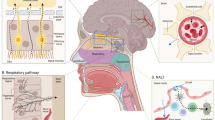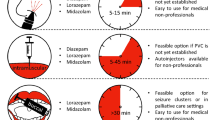ABSTRACT
Purpose
To determine the influence of drug physicochemical properties on brain mitochondrial delivery of 20 drugs at physiological pH.
Methods
The delivery of 8 cationic drugs (beta-blockers), 6 neutral drugs (corticosteroids), and 6 anionic drugs (non-steroidal anti-inflammatory drugs, NSAIDs) to isolated rat brain mitochondria was determined with and without membrane depolarization. Multiple linear regression was used to determine whether lipophilicity (Log D), charge, polarizability, polar surface area (PSA), and molecular weight influence mitochondrial delivery.
Results
The Log D for beta-blockers, corticosteroids, and NSAIDs was in the range of −1.41 to 1.37, 0.72 to 2.97, and −0.98 to 2, respectively. The % mitochondrial uptake increased exponentially with an increase in Log D for each class of drugs, with the uptake at a given lipophilicity obeying the rank order cationic>anionic>neutral. Valinomycin reduced membrane potential and the delivery of positively charged propranolol and betaxolol. The best equation for the combined data set was Log % Uptake = 0.333 Log D + 0.157 Charge – 0.887 Log PSA + 2.032 (R2 = 0.738).
Conclusions
Drug lipopohilicity, charge, and polar surface area and membrane potential influence mitochondrial drug delivery, with the uptake of positively charged, lipophilic molecules being the most efficient.





Similar content being viewed by others
Abbreviations
- CNPase:
-
2′ 3′-cyclic nucleotide 3′-phosphodiesterase
- EDTA:
-
ethylenediaminetetraacetic acid
- F:
-
explained variance/unexplained variance
- FL2/FL1:
-
590 nm emission/525 nm emission
- LC-MS/MS:
-
liquid chromatography tandem mass spectrometry
- LDH:
-
lactate dehydrogenase
- Log D:
-
Log distribution coefficient
- Log P:
-
Log partition coefficient
- MW:
-
molecular weight
- N:
-
number of molecules
- NSAIDs:
-
non-steroidal anti-inflammatory drugs
- PBS:
-
phosphate-buffered saline
- pKa:
-
acid dissociation constant
- PSA:
-
polar surface area
- Q:
-
charge
- R2 :
-
amount of variance in dependent variable that is explained by model
- SD:
-
standard deviation
- SE:
-
standard error of the estimate
- α:
-
polarizability
REFERENCES
Good PF, Werner P, Hsu A, Olanow CW, Perl DP. Evidence of neuronal oxidative damage in Alzheimer’s disease. Am J Pathol. 1996;149(1):21–8.
Spina MB, Cohen G. Dopamine turnover and glutathione oxidation: implications for Parkinson disease. Proc Natl Acad Sci USA. 1989;86(4):1398–400.
Geromel V, Kadhom N, Cebalos-Picot I, Ouari O, Polidori A, Munnich A, et al. Superoxide-induced massive apoptosis in cultured skin fibroblasts harboring the neurogenic ataxia retinitis pigmentosa (NARP) mutation in the ATPase-6 gene of the mitochondrial DNA. Hum Mol Genet. 2001;10(11):1221–8.
Carmody RJ, Cotter TG. Oxidative stress induces caspase-independent retinal apoptosis in vitro. Cell Death Differ. 2000;7(3):282–91.
Dunaief J. Iron induced oxidative damage as a potential factor in age-related macular degeneration: the Cogan Lecture. Invest Ophthalmol Vis Sci. 2006;47(11):4660–4.
Primea TA, Blaikieb FH, Evansb C, Nadtochiyc SM, Jamesa AM, Dahma CC, et al. A mitochondria-targeted S-nitrosothiol modulates respiration, nitrosates thiols, and protects against ischemia-reperfusion injury. Proc Natl Acad Sci USA. 2009;106(26):10764–9.
Zhao K, Zhao GM, Wu D, Soong Y, Birk AV, Schiller PW, et al. Cell-permeable peptide antioxidants targeted to inner mitochondrial membrane inhibit mitochondrial swelling, oxidative cell death, and reperfusion injury. J Biol Chem. 2004;279(33):34682–90.
Neroev V, Archipova M, Bakeeva L, Fursova A, Grigorian E, Grishanova A, et al. Mitochondria-targeted plastoquinone derivatives as tools to interrupt execution of the aging program. 4. Age-related eye disease. SkQ1 returns vision to blind animals. Biochemistry (Moscow). 2008;73(12):1317–28.
Horobin RW, Trapp S, Weissig V. Mitochondriotropics: a review of their mode of action, and their applications for drug and DNA delivery to mammalian mitochondria. J Control Release. 2007;121(3):125–36.
Kamo N, Muratsugu M, Hongoh R, Kobatake Y. Membrane potential of mitochondria measured with an electrode sensitive to tetraphenyl phosphonium and relationship between proton electrochemical potential and phosphorylation potential in steady state. J Membr Biol. 1979;49(2):105–21.
Kadam RS, Kompella UB. Influence of lipophilicity on drug partitioning into sclera, choroid-retinal pigment epithelium, retina, trabecular meshwork, and optic nerve. J Pharmacol Exp Ther. 2010;332(3):1107–20.
Thakur A, Kadam RS, Kompella UB. Influence of drug solubility and lipophilicity on transscleral retinal delivery of six corticosteroids. Drug Metab Dispos. 2010;39(5):771–81.
Castello PR, Drechsel DA, Patel M. Mitochondria are a major source of paraquat-induced reactive oxygen species production in the brain. J Biol Chem. 2007;282(19):14186–93.
Sims NR, Anderson MF. Isolation of mitochondria from rat brain using Percoll density gradient centrifugation. Nat Protoc. 2008;3(7):1228–39.
Drechsel DA, Patel M. Respiration-dependent H2O2 removal in brain mitochondria via the thioredoxin/peroxiredoxin system. J Biol Chem. 2010;285(36):27850–8.
Cossarizza A, Ceccarelli D, Masini A. Functional heterogeneity of an isolated mitochondrial population revealed by cytofluorometric analysis at the single organelle level. Exp Cell Res. 1996;222(1):84–94.
Kadam RS, Kompella UB. Cassette analysis of eight beta-blockers in bovine eye sclera, choroid-RPE, retina, and vitreous by liquid chromatography-tandem mass spectrometry. J Chromatogr B Analyt Technol Biomed Life Sci. 2009;877(3):253–60.
Lala N, Kumara J, Erdahla WE, Pfeiffera DR, Gaddc ME, Graffc G, et al. Differential effects of non-steroidal anti-inflammatory drugs on mitochondrial dysfunction during oxidative stress. Arch Biochem Biophys. 2009;490(1):1–8.
Polster BM, Basanez G, Young M, Suzuki M, Fiskum G. Inhibition of Bax-induced cytochrome c release from neural cell and brain mitochondria by dibucaine and propranolol. J Neurosci. 2003;23(7):2735–43.
Dreisbach AW, Greif RL, Lorenzo BJ, Reidenberg MM. Lipophilic beta-blockers inhibit rat skeletal muscle mitochondrial respiration. Pharmacology. 1993;47(5):295–9.
Sionov RV, Cohen O, Kfir S, Zilberman Y, Yefenof E. Role of mitochondrial glucocorticoid receptor in glucocorticoid-induced apoptosis. J Exp Med. 2006;203(1):189–201.
Smiley ST, Reers M, Mottola-Hartshorn C, Lin M, Chen A, Smith TW, et al. Intracellular heterogeneity in mitochondrial membrane potentials revealed by a J-aggregate-forming lipophilic cation JC-1. Proc Natl Acad Sci USA. 1991;88(9):3671–5.
Johnson LV, Walsh ML, Bockus BJ, Chen LB. Monitoring of relative mitochondrial membrane potential in living cells by fluorescence microscopy. J Cell Biol. 1981;88(3):526–35.
Krishnamurthy PC, Du G, Fukuda Y, Sun D, Sampath J, Mercer KE, et al. Identification of a mammalian mitochondrial porphyrin transporter. Nature. 2006;443(7111):586–9.
Zackova M, Kramer R, Jezek P. Interaction of mitochondrial phosphate carrier with fatty acids and hydrophobic phosphate analogs. Int J Biochem Cell Biol. 2000;32(5):499–508.
Palmieri F. The mitochondrial transporter family (SLC25): physiological and pathological implications. Pflugers Arch. 2004;447(5):689–709.
Garg P, Verma J, Roy N. In silico modeling for blood—brain barrier permeability predictions. Springer US: Drug Absorption Studies; 2008. p. 510–56.
Smith NF, Raynaud FI, Workman P. The application of cassette dosing for pharmacokinetic screening in small-molecule cancer drug discovery. Mol Cancer Ther. 2007;6(2):428–40.
ACKNOWLEDGMENTS & DISCLOSURES
This work was supported in part by the NIH grants R01EY018940 (UBK), R01EY017533 (UBK), R01NS45748 (MP) and R01NS039587 (MP).
Author information
Authors and Affiliations
Corresponding author
Electronic Supplementary Material
Below is the link to the electronic supplementary material.
Supplemental Figure 1
NSAID chromatogram containing a mixture of 5 μg/ml of each NSAID. Peaks: (1) indoprofen; (2) naproxen; (3) tolmetin; (4) ketoprofen; (5) flurbiprofen; (6) diclofenac; (7) mefenamic acid. (PDF 412 kb)
Rights and permissions
About this article
Cite this article
Durazo, S.A., Kadam, R.S., Drechsel, D. et al. Brain Mitochondrial Drug Delivery: Influence of Drug Physicochemical Properties. Pharm Res 28, 2833–2847 (2011). https://doi.org/10.1007/s11095-011-0532-4
Received:
Accepted:
Published:
Issue Date:
DOI: https://doi.org/10.1007/s11095-011-0532-4




